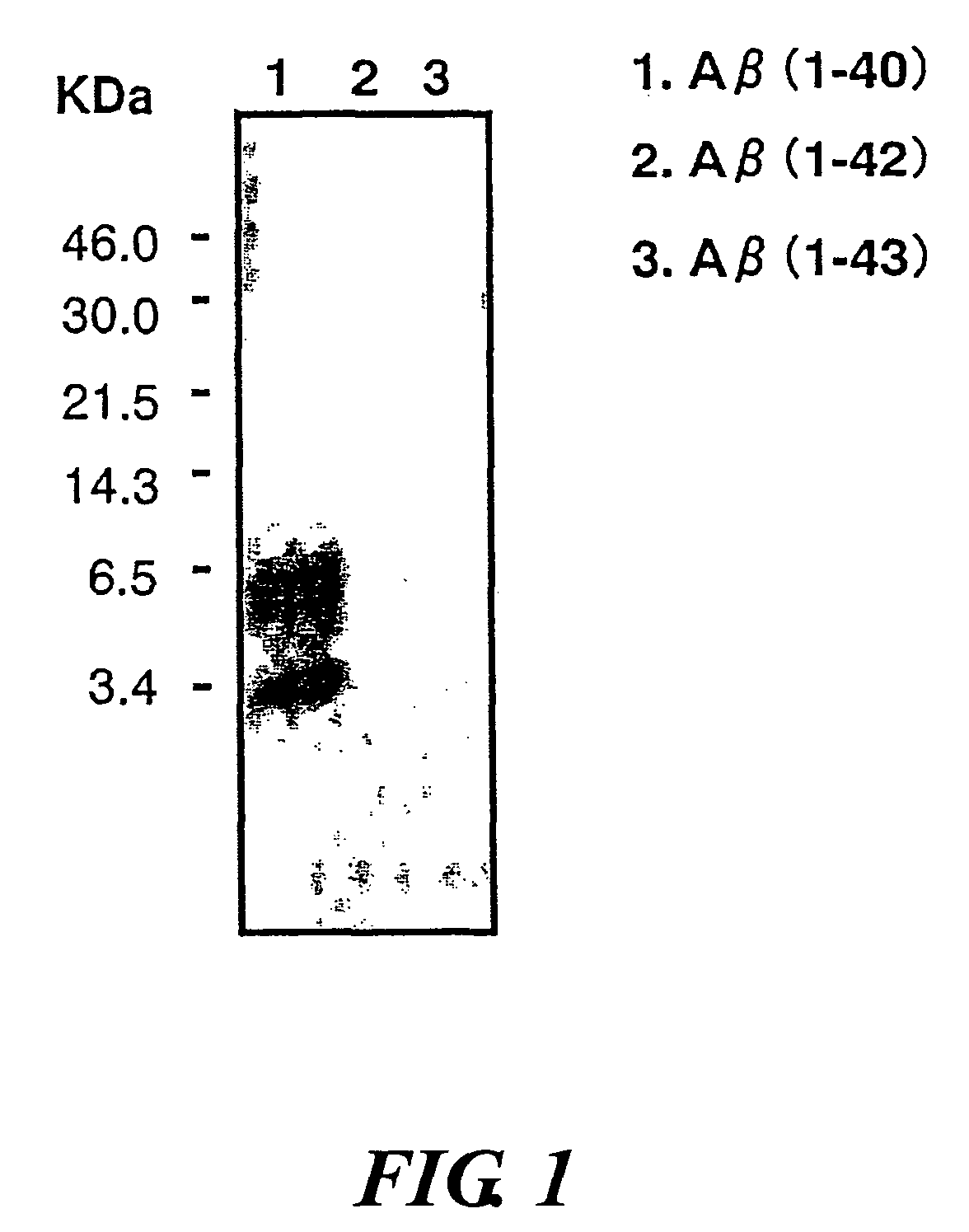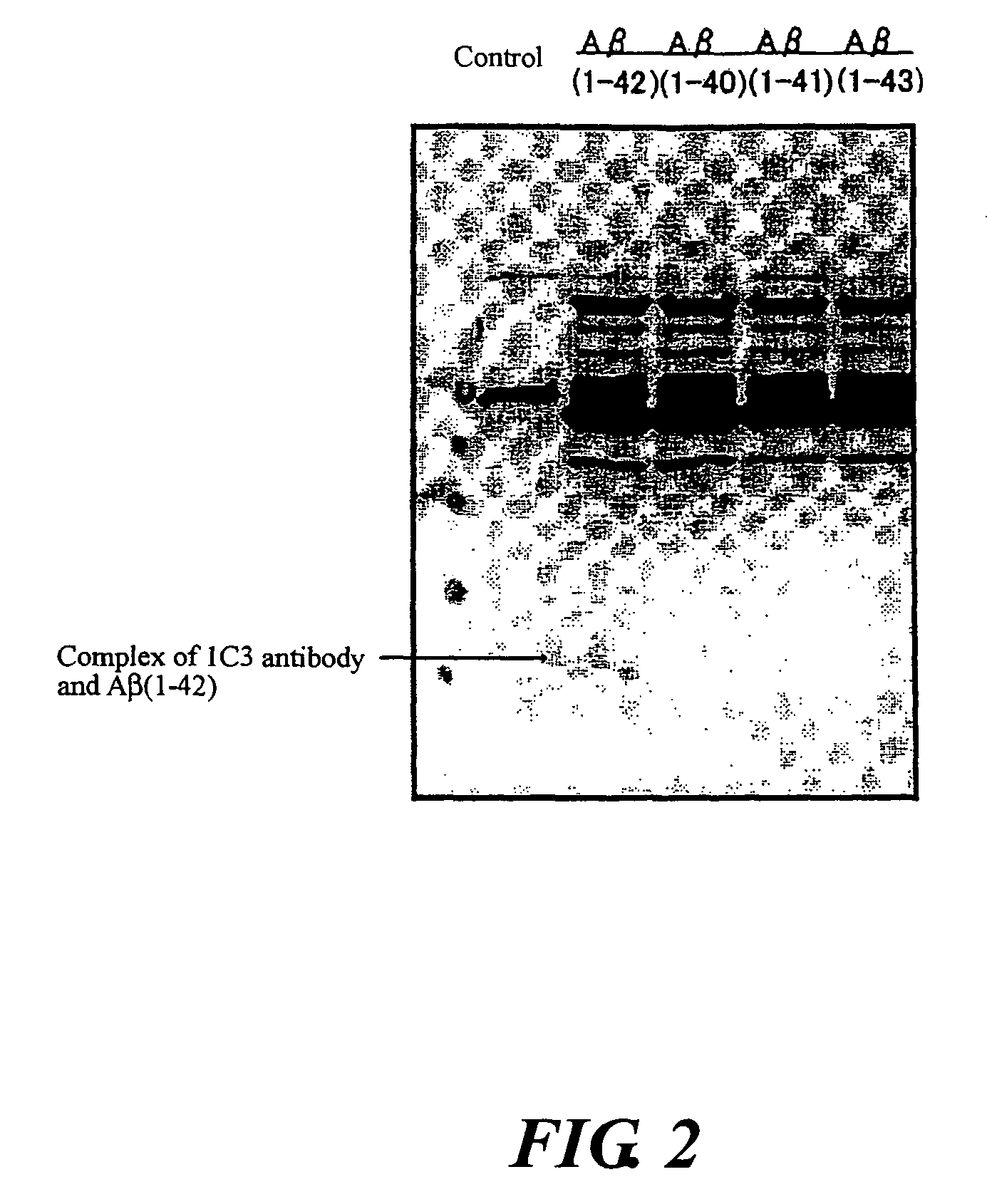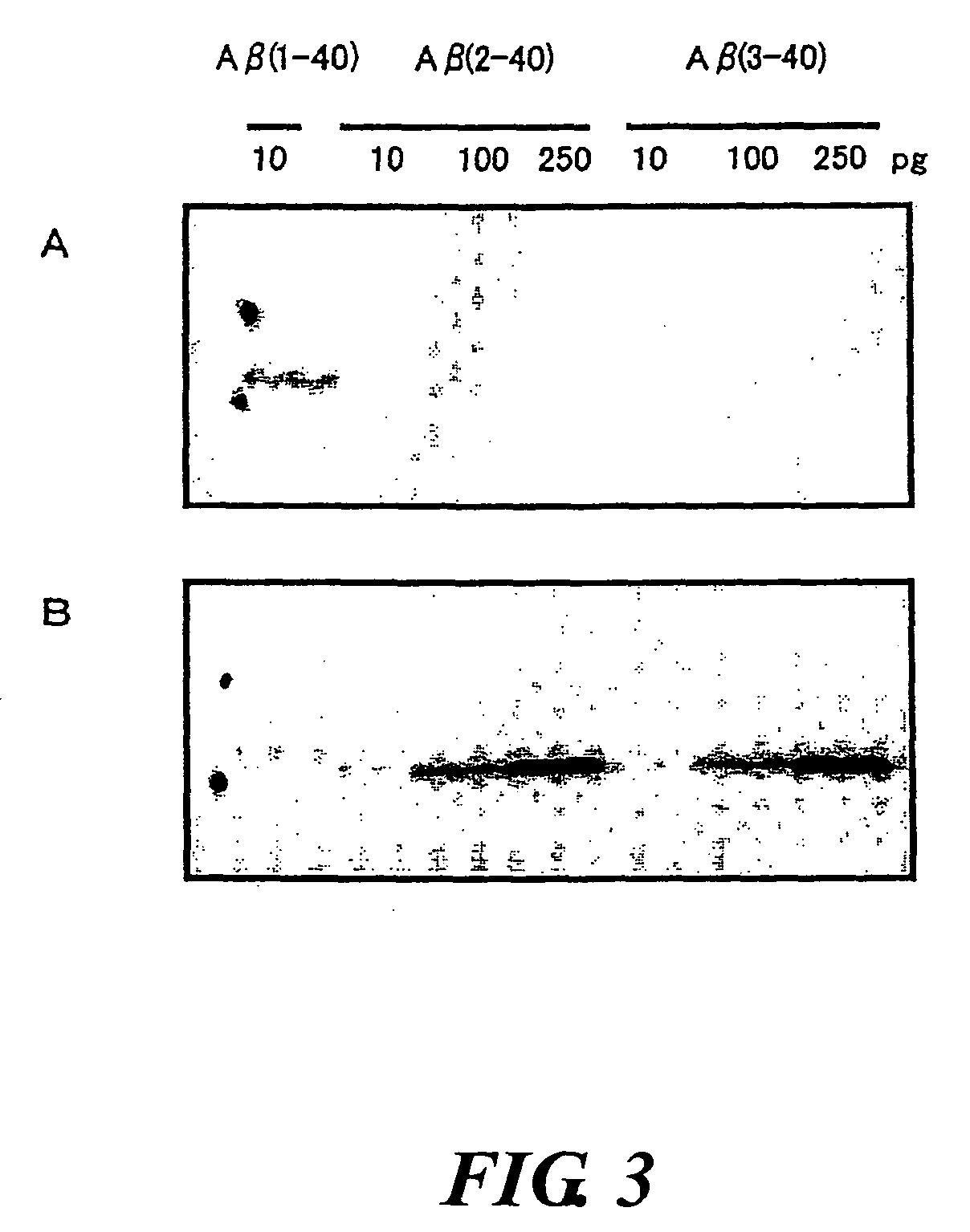Monoclonal antibodies and use thereof
a monoclonal antibody and monoclonal antibody technology, applied in the field of monoclonal antibodies, can solve the problems of not being clinically applied, high possibility of side reactions, etc., and achieve the effect of preventing the accumulation of amyloids and safely treating alzheimer's diseas
- Summary
- Abstract
- Description
- Claims
- Application Information
AI Technical Summary
Benefits of technology
Problems solved by technology
Method used
Image
Examples
example 1
Procurement of N-terminus Peptide and C-terminus Peptide of Amyloid β
[0085]N-terminus peptide and C-terminus peptide of amyloid β purified by HPLC were purchased from Synpep Corporation and TANA Laboratories, USA. The amino acid sequences of these peptides are shown in (e), (f), (g), and (h) below. The peptide (e) has cysteine (C) attached to amino acid sequence 1-16 (Sequence ID No. 1) of amyloid β, the peptide (f) has C attached to amino acid sequence 1-5 (Sequence ID No. 2) of amyloid β, the peptide (g) has KC attached to amino acid sequence 35-40 (Sequence ID No. 3) of amyloid β (1-40), and the peptide (h) has lysine-cysteine (KC) attached to amino acid sequence 38-42 (Sequence ID No. 4) of amyloid β (1-42).
[0086]
(e)DAEFRHDSGYEVHHQKC(Sequence ID No. 1)(f)DAEFRC(Sequence ID No. 2)(g)KCMVGGVV(Sequence ID No. 3)(h)KCGVVIA(Sequence ID No. 4)
example 2
Preparation of Antigen for Immunization
[0087]Bound substances of each of the above peptides and thyroglobulin were prepared by the EMCS (N-(6-Maleimidocaproyloxy)-succinimide) method as follows. The molar ratio of the thyroglobulin, peptide, and EMCS used for preparing the bound substances was 1:300:400.
[0088]First, 4 mg of each peptide of Example 1 was dissolved in about 1 ml of distilled water. A solution of 5 mg of thyroglobulin in 1 ml of a 0.01 M phosphoric acid buffer (pH 7.0) and a solution of 80 μg / μl EMCS dissolved in dimethylformamide were mixed in an amount to obtain a thyroglobulin-EMCS complex solution containing the thyroglobulin and EMCS at the above molar ratio. This complex solution was divided into four portions, to each of which was added each peptide solution in an amount to make the above molar ratio, thereby obtaining a solution of a bound substance of the peptide crosslinked by EMCS and the thyroglobulin.
[0089]This bound substance solution was dialyzed using P...
example 3
Preparation of Antibody Recognizing C-terminus Peptide of Amyloid β (1-40)
[0090]A mouse was immunized using the bound substance of the peptide (g) and thyroglobulin obtained in Example 2 as an antigen for immunization by administering 50 μl (50 μg) of the bound substance solution at an interval of one or two weeks. The antigen was mixed with a complete Freund's adjuvant only in initial immunization and mixed with an incomplete Freund's adjuvant in the subsequent immunization. Spleen monocyte cells of the immunized mouse and a fusion partner, X63-Ag8-653, were subjected to polyethylene glycol-mediated cell fusion and hybridomas were selected using the method described in J. Immunol. 146:3721-3728. In selecting the hybridomas, cells that react with immobilized peptide (g), but appear not reactive with peptide (h) were selected.
[0091]The cells selected in this manner were cultured in a serum-free GIT culture medium (manufactured by Wako Pure Chemical Industries, Ltd.) to produce antibo...
PUM
| Property | Measurement | Unit |
|---|---|---|
| temperature | aaaaa | aaaaa |
| temperature | aaaaa | aaaaa |
| temperature | aaaaa | aaaaa |
Abstract
Description
Claims
Application Information
 Login to View More
Login to View More - R&D
- Intellectual Property
- Life Sciences
- Materials
- Tech Scout
- Unparalleled Data Quality
- Higher Quality Content
- 60% Fewer Hallucinations
Browse by: Latest US Patents, China's latest patents, Technical Efficacy Thesaurus, Application Domain, Technology Topic, Popular Technical Reports.
© 2025 PatSnap. All rights reserved.Legal|Privacy policy|Modern Slavery Act Transparency Statement|Sitemap|About US| Contact US: help@patsnap.com



